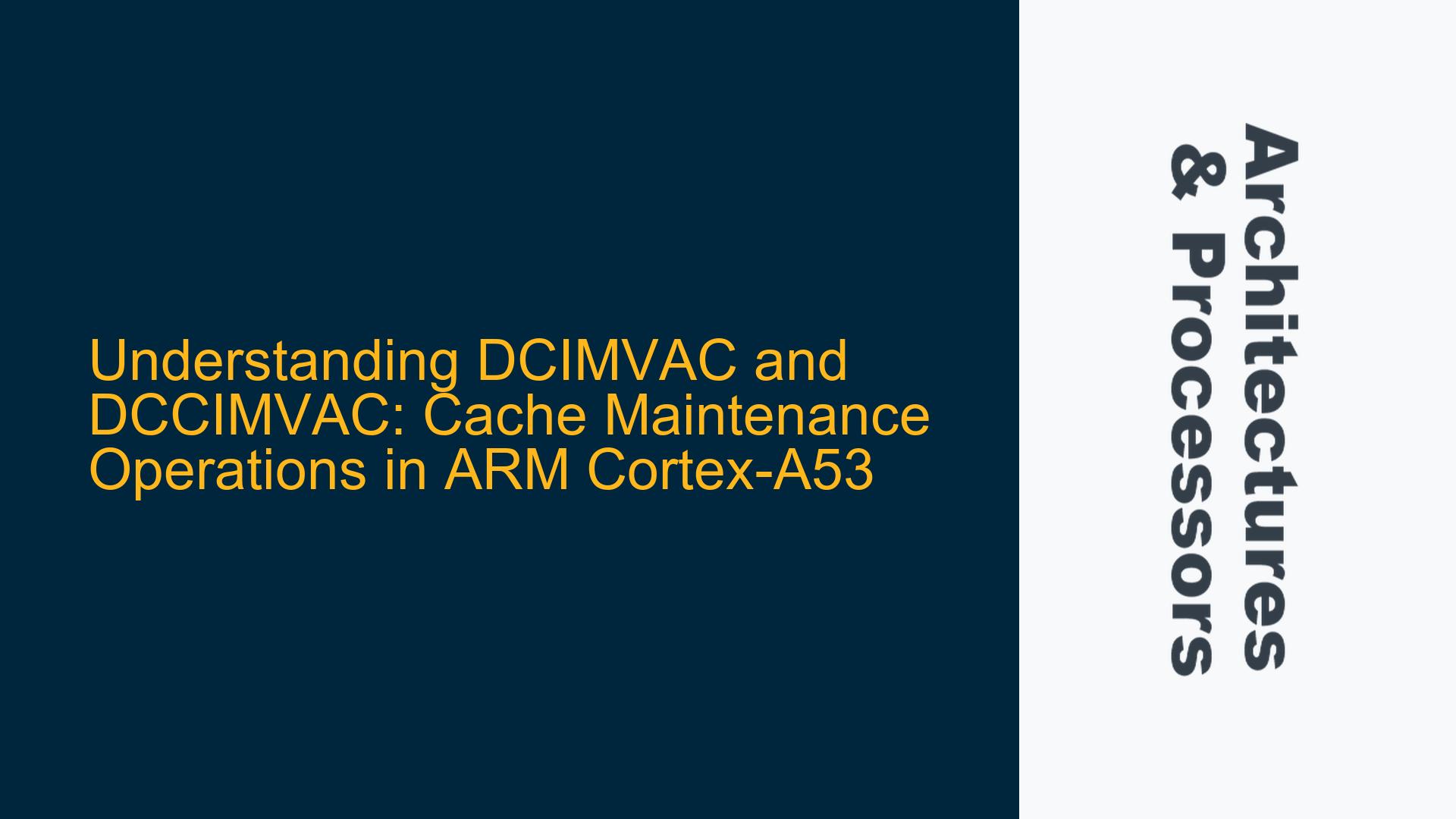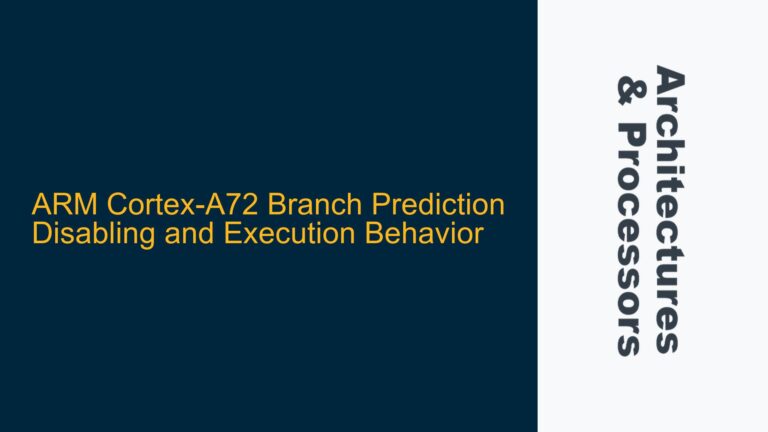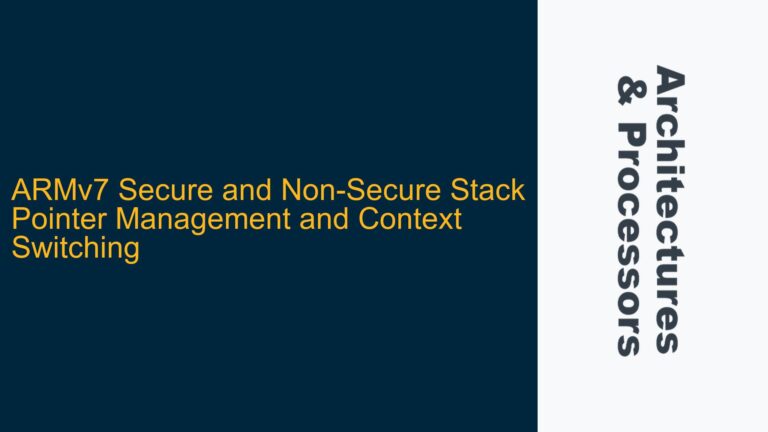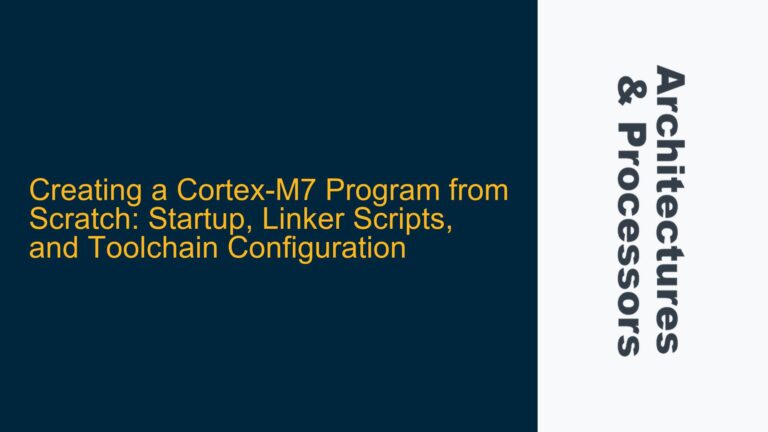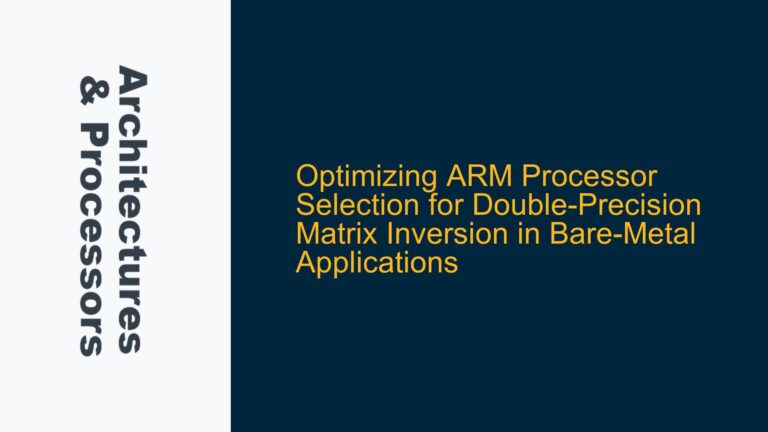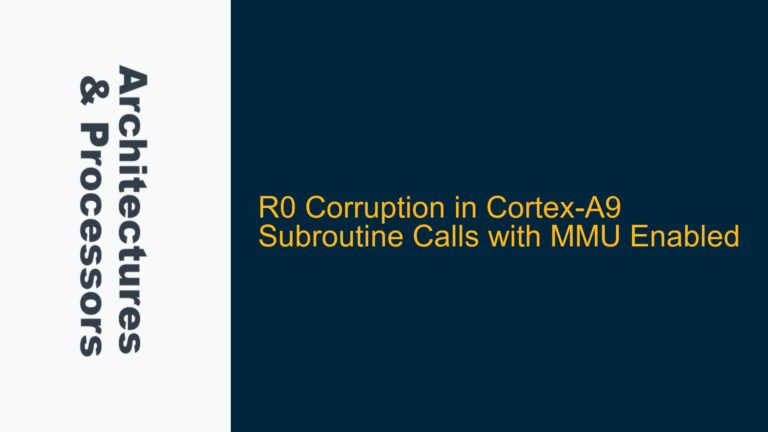ARM Cortex-A53 Cache Maintenance Operations: DCIMVAC vs. DCCIMVAC
The ARM Cortex-A53 processor, a widely used core in embedded systems, implements sophisticated cache maintenance operations to ensure data consistency and system performance. Two such operations, DCIMVAC (Data Cache Invalidate by Modified Virtual Address to PoC) and DCCIMVAC (Data Cache Clean and Invalidate by Modified Virtual Address to PoC), are often a source of confusion due to their seemingly similar behaviors. While both operations involve cleaning and invalidating cache lines, their architectural definitions and practical implications differ significantly. This post delves into the nuances of these operations, their use cases, and how to troubleshoot issues arising from their misuse or misunderstanding.
Memory Consistency and Cache Coherency in ARM Cortex-A53
The ARM Cortex-A53 processor employs a multi-level cache hierarchy to optimize memory access latency and bandwidth. Cache maintenance operations like DCIMVAC and DCCIMVAC are critical for ensuring memory consistency, especially in systems with multiple cores or DMA (Direct Memory Access) engines. The primary distinction between DCIMVAC and DCCIMVAC lies in their handling of dirty cache lines and their architectural guarantees.
DCIMVAC is designed to invalidate a cache line, but it also performs a clean operation if the cache line is dirty. This ensures that any modified data is written back to the main memory before the line is invalidated. On the other hand, DCCIMVAC explicitly performs both a clean and an invalidate operation, regardless of the cache line’s state. While the practical outcome of these operations may appear identical in some implementations, their architectural definitions and intended use cases differ.
The ARM Cortex-A53 Technical Reference Manual specifies that DCIMVAC and DCCIMVAC are architecturally distinct, but implementations may choose to handle them similarly. This flexibility can lead to confusion, especially when developers rely on specific behaviors that are not guaranteed across all implementations. Understanding the architectural intent and practical implications of these operations is crucial for writing robust and portable code.
Cache Line State Management and Architectural Ambiguities
The behavior of DCIMVAC and DCCIMVAC is influenced by the state of the cache line being operated on. A cache line can be in one of several states, including valid, invalid, clean, or dirty. A dirty cache line contains modified data that has not yet been written back to main memory, while a clean cache line contains unmodified data that matches the contents of main memory.
DCIMVAC performs a clean operation only if the cache line is dirty, followed by an invalidate operation. This ensures that any modified data is preserved in main memory before the cache line is invalidated. In contrast, DCCIMVAC always performs a clean operation, regardless of the cache line’s state, followed by an invalidate operation. This explicit cleaning can be useful in scenarios where the cache line’s state is unknown or when ensuring that all modifications are written back to memory is critical.
The architectural ambiguity arises from the fact that some implementations may treat DCIMVAC and DCCIMVAC identically, effectively merging their behaviors. This can lead to unexpected results if developers rely on the specific behavior of one operation without considering the implementation details. For example, if a developer assumes that DCIMVAC will only clean dirty cache lines, but the implementation treats it as equivalent to DCCIMVAC, the resulting behavior may differ from expectations.
Implementing Cache Maintenance Strategies for Robust Systems
To avoid issues related to cache maintenance operations, developers should adopt a systematic approach to cache management. This involves understanding the architectural guarantees of each operation, considering implementation-specific behaviors, and using appropriate synchronization mechanisms to ensure data consistency.
When using DCIMVAC, developers should be aware that it may perform a clean operation if the cache line is dirty. This behavior is useful in scenarios where preserving modified data is important, but it may introduce unnecessary overhead if the cache line is already clean. In such cases, using DCCIMVAC can provide more predictable behavior, as it explicitly cleans the cache line before invalidating it.
In systems with multiple cores or DMA engines, cache maintenance operations must be coordinated to ensure data consistency. This often involves using memory barriers or synchronization primitives to enforce the correct ordering of operations. For example, if a DMA engine is transferring data to a memory region that is also being accessed by a CPU core, the CPU must ensure that any modified data in its cache is written back to memory before the DMA transfer begins. This can be achieved using DCCIMVAC to clean and invalidate the relevant cache lines, followed by a memory barrier to ensure that the DMA engine sees the updated data.
Developers should also consider the performance implications of cache maintenance operations. Cleaning and invalidating cache lines can introduce significant overhead, especially in systems with large caches or high memory traffic. To minimize this overhead, developers should aim to limit the scope of cache maintenance operations to the smallest necessary region of memory. This can be achieved by using address-specific cache maintenance instructions, such as DCIMVAC and DCCIMVAC, rather than global cache maintenance operations.
In summary, understanding the differences between DCIMVAC and DCCIMVAC is essential for writing robust and efficient code for ARM Cortex-A53 processors. By considering the architectural guarantees, implementation-specific behaviors, and system-level requirements, developers can implement effective cache maintenance strategies that ensure data consistency and optimize performance.
